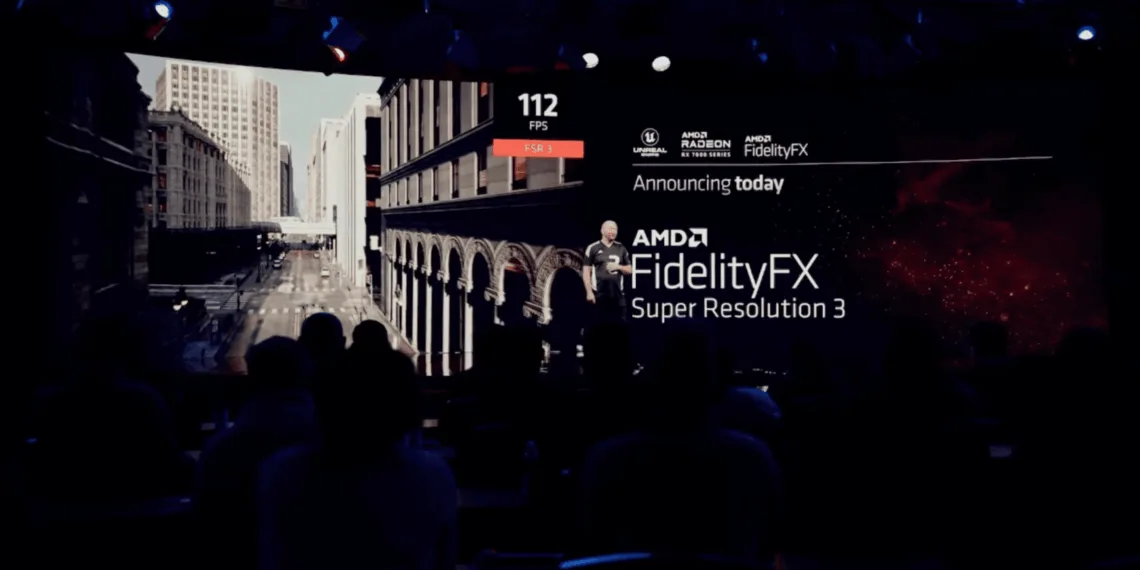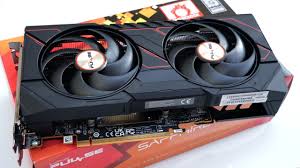At GDC 2023, AMD revealed more details about its FSR 3 FidelityFX Super Resolution technology, giving us a taste of what’s to come in the gaming world. AMD unveiled FSR 3, its next-generation FidelityFX Super Resolution suite, at GDC 2023. AMD wants to generate even more pixels in a current frame with interpolated frames as the third generation of FSR, allowing the company to achieve a 2x performance improvement over the existing FSR 2 technique.
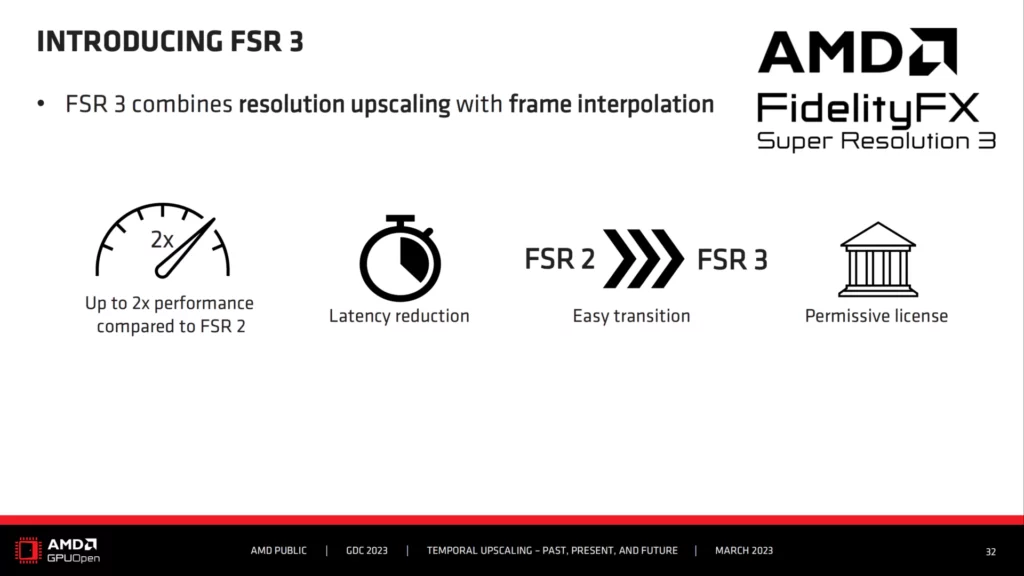
FSR 3 is likely to have at least one sample for each interpolated pixel and no feedback loop because the interpolated frame is only shown once.
As a result, any interpolation artefact would only be visible for a single frame.
- Motion Vectors and AMD Fluid Motion to produce interpolated frames
- Good motion estimation is key for interpolation
- Additional internal information from FSR 2 can be leveraged
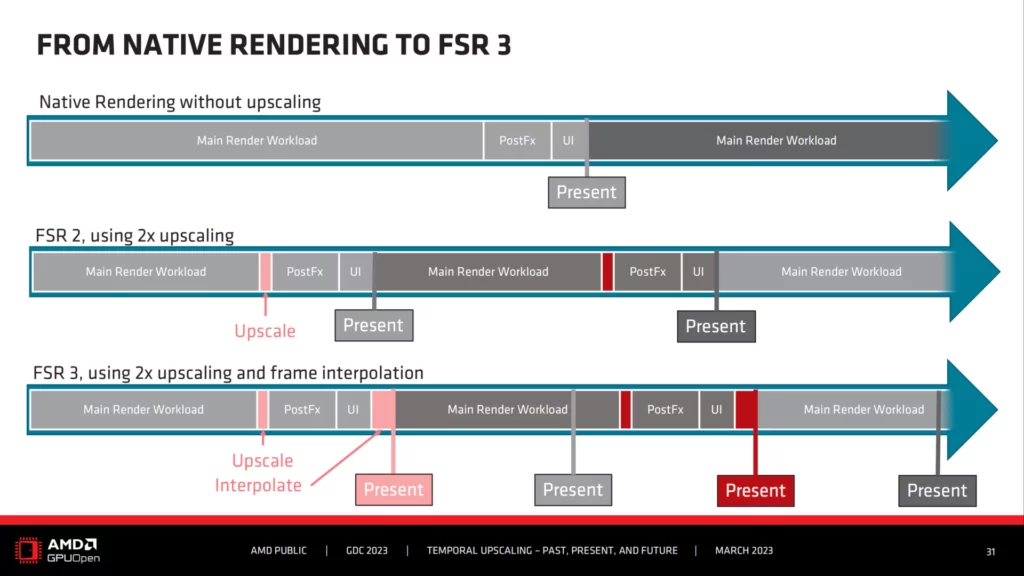
Latency reduction will also be a key focus area for AMD FSR 3 FidelityFX Super Resolution, as the company recognises that gamers require both high frame rates and the lowest possible latency. It also appears that FSR 3 will be very easy to migrate to titles that already use FSR 2 integrations. Finally, an open-source MIT licence will be available if needed to allow for maximum integration flexibility.
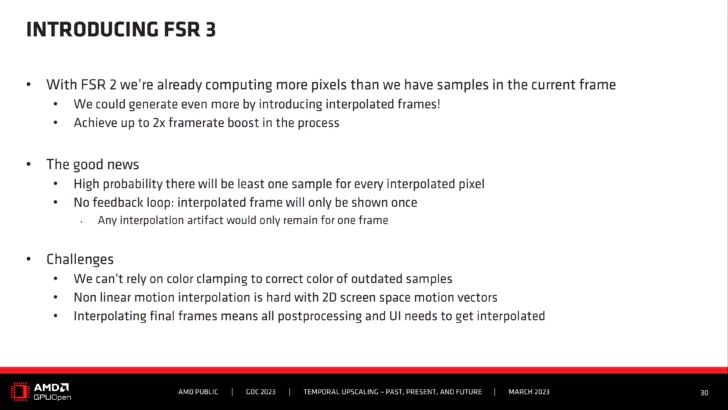
In terms of performance, AMD’s FSR 3 was shown to outperform FSR 2 at 4K resolution by a factor of two. AMD demonstrated an Unreal Engine 5 demo in which the FPS increased from 60 FPS (FSR 2) to 112 FPS (FSR 3).
Also Read:

